A brief history of Rugby School
At least two centuries of Rugby’s history are written in the stones and other monuments to tradition that stand around the School Close, where in 1823, local lad William Webb Ellis, with a fine disregard for the rules of football, took the ball in his arms and ran with it, originating the game of rugby football.
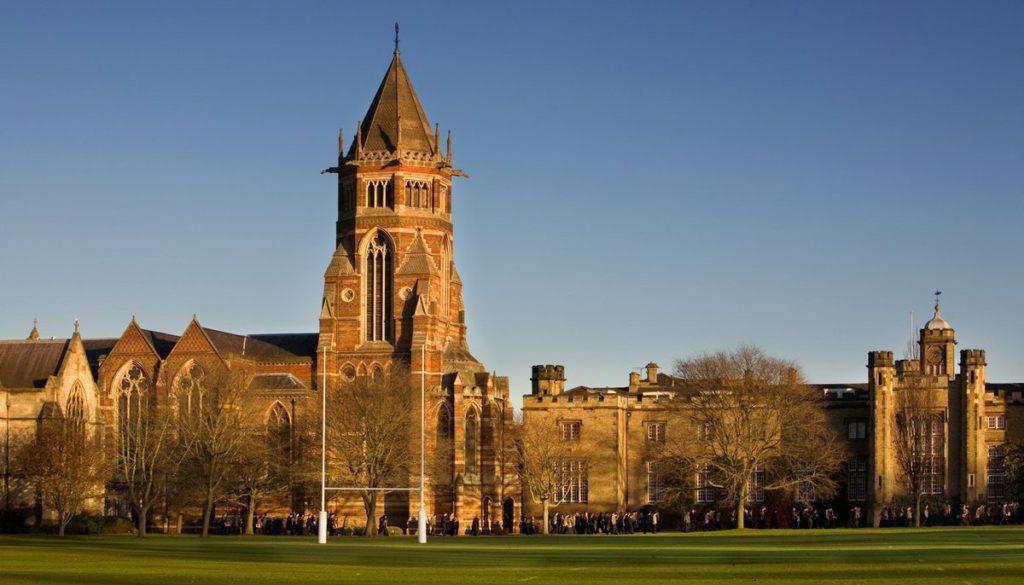
Butterfield's Chapel
1839: Queen Adelaide's visit to Rugby School
The players then were more numerous: in 1839, when Queen Adelaide visited the School, it was School House (75) versus The Rest (225). Today, innumerable tourists visit the ‘home of the game’ and rugby teams from all over the world can be seen training against the distinctive backdrop of Butterfield’s Chapel.
The King's Oak
At the top of The Close stands The King’s Oak, planted by Edward VII in 1909, beneath which the Heads of School watch the School file into Chapel every morning. Behind it rises the battlemented skyline of School House where the Head Master has his study – he still sits at Bishop Percival’s desk – which pupils can enter by a spiral staircase at the foot of a tower.
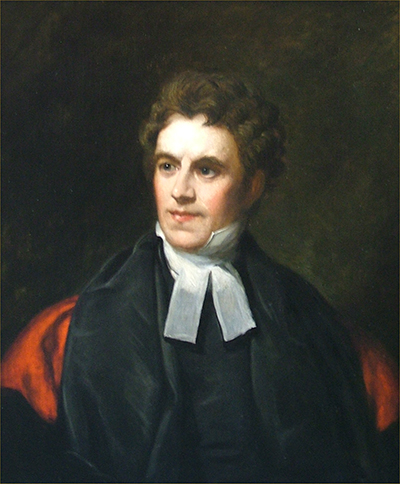
Dr Thomas Arnold
“First religious and moral principle, second gentlemanly conduct, third academic ability.”
Thomas Arnold: Head Master 1828-42
Rugby’s greatest Head Master Dr Arnold (1828–42) instigated this practice so that boys could see him privately and the tradition continues today. Arnold is famed for ridding the School of its Flashmans and emphasising subjects that were a good ‘preparation for power’. He treated his senior boys as gentlemen, increasing their power and duties so that they shared responsibility for moral tone and discipline with him. As Arnold put it: ‘First religious and moral principle, second gentlemanly conduct, third academic ability.’ Masters were expected to supervise as well as teach; the dames’ houses were abolished and pastoral care was born.
If Arnold’s educational initiatives had not assured Rugby’s fame, his political intervention certainly would have done. His 1829 pamphlet on the issue of Catholic Emancipation attracted widespread criticism, and though the storm of publicity had subsided by the late 1830s, Rugby School and its remarkable Head Master were now national news and the School was growing rapidly. Not only did the 260 boys Arnold inherited become 360 by the time he died, but his disciples spread his ideas throughout the United Kingdom and Empire. No fewer than 23 of his assistant masters became Head Masters of other public schools between 1842 and 1899. This trend has continued ever since.
Arnold’s ideas – or at least Thomas Hughes’ version of them – found particularly fertile ground in France and in the mind of one French boy in particular. Pierre de Coubertin was twelve years old when he first encountered Thomas Arnold in the pages of Tom Brown’s School Days. By the time the novel was translated into French in 1875, Arnold had become something of a legend. Inspired by what he had read, de Coubertin visited Rugby several times during the 1880s and concluded that organised sport could be used to raise the aspirations and improve the behaviour of young people. This idea fuelled his vision for universal amateur athletics which culminated, in 1896, in the first modern Olympic Games in Athens. As one world expert on Olympic history says, ‘Thomas Arnold was the single most important influence on the life and thought of Pierre de Coubertin’.
Arnold’s influential role in the Olympic Games is commemorated in a plaque on the School’s Doctor’s Wall, unveiled by Lord Sebastian Coe in 2009. In July 2012 the Olympic Torch came to Rugby School on its route towards the Olympic Stadium and paused at the plaque to acknowledge the importance of Thomas Arnold who would certainly have enjoyed the School’s re-enactment of a 19th Century game of rugby with the boys wearing kit of the time.
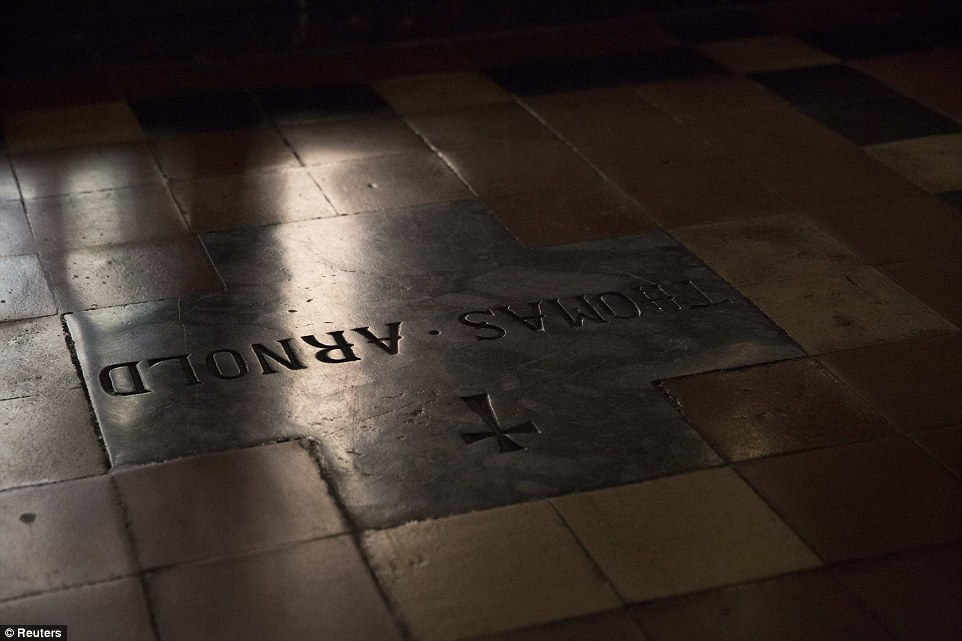
A worthy resting place
A Final Resting Place
Arnold was succeeded by a number of formidable figures, notably Frederick Temple (1858-69), under whom the tercentenary buildings of the New Quad were begun, John Percival (1877-95), who had made his name as the founder of Clifton College, and Herbert Armitage James (1895-1910), whose nickname ‘The Bodger’ has since become part of Rugbeian argot. Numbers further increased in the 20th century from 580 under James to 620 under WW Vaughan (1921-31), passed 700 under Sir Arthur fforde (1948-57) and topped 800 under Brian Rees in the early 1980s.
Having resounded to Arnold’s passionate sermons, the Chapel is now his resting place, beneath the chancel steps. The walls boast tablets in memory of renowned Rugbeian writers such as Lewis Carroll, Rupert Brooke and the Victorian poets – Matthew Arnold, Arthur Hugh Clough and Walter Savage Landor. The Boomer, a 3¼ ton bell raised in July 1914 and rung at noon every day in the First World War, still calls the School to Chapel. In 2001, a new award-winning organ was inaugurated in the Chapel. The smaller Memorial Chapel, was dedicated in 1922 commemorates the Rugbeians that gave their lives in multiple wars.
Before even the first chapel was built, however, Old Quad was. A drainpipe proclaims the date 1809 of this oldest part of the School, designed by Henry Hakewill, who was also responsible for School House and the first chapel (1820). Here is the trough where Tom Brown was ‘ducked’ and, inside, the fire where he was ‘roasted’. Looking up one sees Upper Bench where Arnold taught Thucydides and looked down severely upon moral turpitude. On the town side, a splendid oriel window with stained glass portraits of successive Head Masters looks out over the main School gate and down the High Street to where the School began, 200 yards away.
The Beginning
To return to the beginning, then, Rugby was founded in 1567 by Lawrence Sheriff, purveyor of spices to Queen Elizabeth I, as a Free Grammar School for the boys of Rugby and Brownsover. In the following century the School’s fate remained uncertain and in 1651 it all but collapsed, but by 1667 Rugby was acquiring a name for scholarship and it developed rapidly under a series of outstanding masters, including Henry Holyoake (1688–1731), who drew boys from as far afield as Cheshire, Kent and Somerset. Under him assistant masters first appeared – men who were curates of neighbouring villages. Numbers reached a new high of 245 boys under Thomas James (1778–94), who administered a new constitution secured by Act of Parliament in 1777. The School moved from the middle of town to occupy a manor house on the present site of School House in 1750.
Click here to read the first Football Rules written in 1845
Football Rules 1845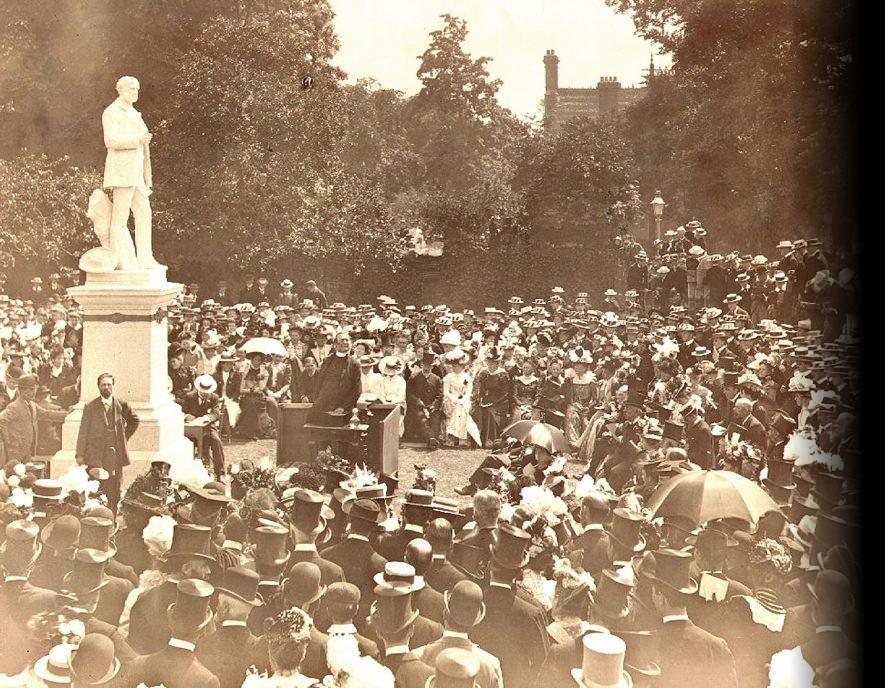
The Great Rebellion
Not long after, before the 18th century was out, the School saw its Great Rebellion. Across the Close from School House stands a Bronze Age burial mound formerly known as the Island, surrounded until 1847 by a six-metre wide moat. It was here in 1797 that certain pupils, having blown the door off the Head Master’s classroom and burned their books on the Close, retreated and drew up the drawbridge behind them. Only when the local militia closed in with pikes and muskets did they yield. The Riot Act was read and some boys were expelled – some later to become renowned military leaders.
If this was already the stuff of fiction, the 19th century saw publication of the first schoolboy novel (a genre Harry Potter continues today) by Thomas Hughes, now immortalised in a white marble statue in front of the Temple Reading Room. Tom Brown’s School Days recently received its umpteenth screen adaptation with Stephen Fry as Dr Arnold and 200 boys acting as extras, stylishly dressed in waistcoats, tails and top hats which they duly flung into the air when recreating the original game of rugby.
Flourishing in the 20th Century
As Rugby entered the 20th century new building flourished. The Edwardian era inspired the Tuscan columns of the Temple Speech Room, named after former Head Master and Archbishop of Canterbury Frederick Temple (1858–69) and now used for whole-School assemblies, Speech Days, concerts, musicals – and BBC Mastermind. Oak-panelled walls boast the portraits of illustrious alumni, including Neville Chamberlain holding his piece of paper. Between the wars, the Memorial Chapel, the Music Schools, a new Sanatorium and another new boarding House appeared.
Since then, all the accessories of a modern boarding school have been added. These include, a Media Studio, Sports Centre, Design Centre, astro-turf pitches and an art gallery, which has quickly become a major exhibition venue for professional artists in the Midlands.
More recently, the School opened an impressive state-of-the-art and environmentally friendly Modern Languages Centre and 2013 saw the opening of the School’s Sixth Form Centre, the Collingwood Centre. The three-storey Pugin-style building is home to the Economics, Business Studies, Art History, Politics, PE and Philosophy departments and also has a common room, central hall and sports hall.
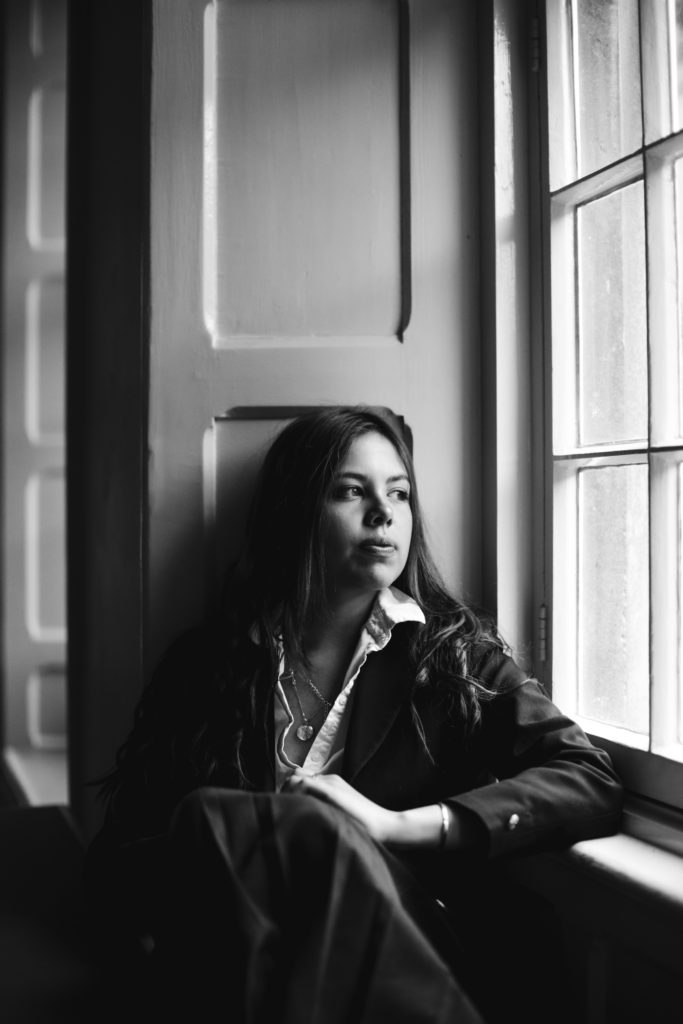
Rugby School Girls: 1975
Rugby: Co-educational
Towards the end of the 20th century, the boys’ school once favoured by England’s monarchs became thoroughly co-educational. In 1975 three girls were admitted into the sixth form, based in Stanley and eating in Town House. In 1976 the first sixth form girls’ house opened, followed by three more over the next 12 years. In 1992, the first 13-year-old girls arrived, two boys’ houses were converted, and in 1995 Rugby had its first-ever Head Girl, Louise Woolcock, who appeared on the front page of The Times and a television breakfast show with customary Rugbeian poise. In September 2003 a last girls’ house called Griffin opened its doors.
Now the School is national and international in outlook and recruitment, with boys and girls from all over the UK and 10% from overseas. As widening access to Rugby remains central to the School’s DNA, the Arnold Foundation for Rugby School was set up in 2003 to fund places for pupils who stand to gain the most from a boarding school education. The School has since joined forces with other members of the education sector as part of the new, national SpringBoard Bursary Foundation drawing on Rugby’s Arnold Foundation model.
Preserving Traditions
Rugby preserves many traditions and plays infinite variations on them. We expect every pupil to own a laptop and parents rightly expect every classroom to be equipped with an interactive electronic whiteboard in a high-tech, wireless-networked, whole-School learning environment. Ask their children why they chose Rugby and you will hear about the old-fashioned virtues of house-dining and playing for the house, about belonging to a friendly extended family – about being part of a story that they themselves are still writing.
More of our archived history can be found here:

